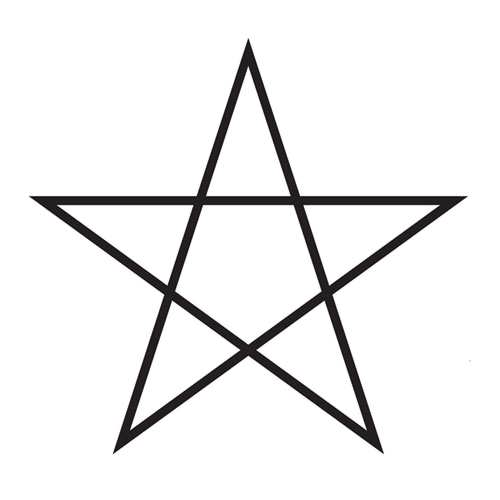The Pentagram symbol, composed of five, straight lines to form a star, harks back to 3000 BC in Mesopotamia, where Sumerian pentagrams were said to connote the word “UB,” meaning “corner” or “angle.” The mystical meaning of the pentagram surfaced in Babylonian times, wherein the five points of the shape was said to refer to Jupiter, Mercury, Mars, Saturn, and Venus. Through the centuries, this five-pointed star has been used by several religions: the Hebrews used the symbol to represent the Truth and the five books of the Pentateuch; the Druids referred to the pentagram as the Godhead and the Christians said that the five points represented Christ’s five wounds.
The power of the pentagram is still used and felt today. Five, for instance, has always been considered a magical number: we have five fingers and toes on each extremity; we have five common senses; we have five initiations in our lives (birth, adolescence, coitus, parenthood, and death). The pentagram also contains the golden mean or ratio: a symbol of beauty and perfection. As such, it is believed to be a powerful symbol for protection against evil or conflicts. It can also be used to promote good and beautiful energy in a person or environment.

» Amulet
» Ajna
» Arsenic
» Merkaba
» Hung
» Yin Yang
» bindi
» IK Onkar
» Khanda
» Halo
» jiahu
» Tau
» Uraeus
» Menorah
» Quincunx
» Tilaka
» Taijitu
» Vajra
» Chai
» Chi Rho
» Bagua
» Dragon
» Hunab Ku
» Caduceus
» Infinity
» Ichthus
» Hedjet
» Lauburu
» Om
» Ankh
» Chalice
» Pentacle
» Maat
» Ogham
» Mandala
» Kartika
» Khamsa
» Heart
» Labrys
» Sun Face
» Raven
» Triskele
» Scarab
» Dove
» Hanukia
» Anubis
» Trishula
» Durga
» Mezuzah
» Bay Tree
» Geruda
» Kinnara
» Quito
» Condor
» Blue Jay
» Falcon
» Makara
» Rosary
» Uluru
» Apsaras
» Hanuman
» Serpent
» Minotaur
» Mercury
» Apex
» Vestra
» Yoni
» Astarte
» dakini
» Calabash
» Mandrake
» Rebis
» Typhon
» Vegvísir

